Building Simulation
Save environment, cost, and get international recognition
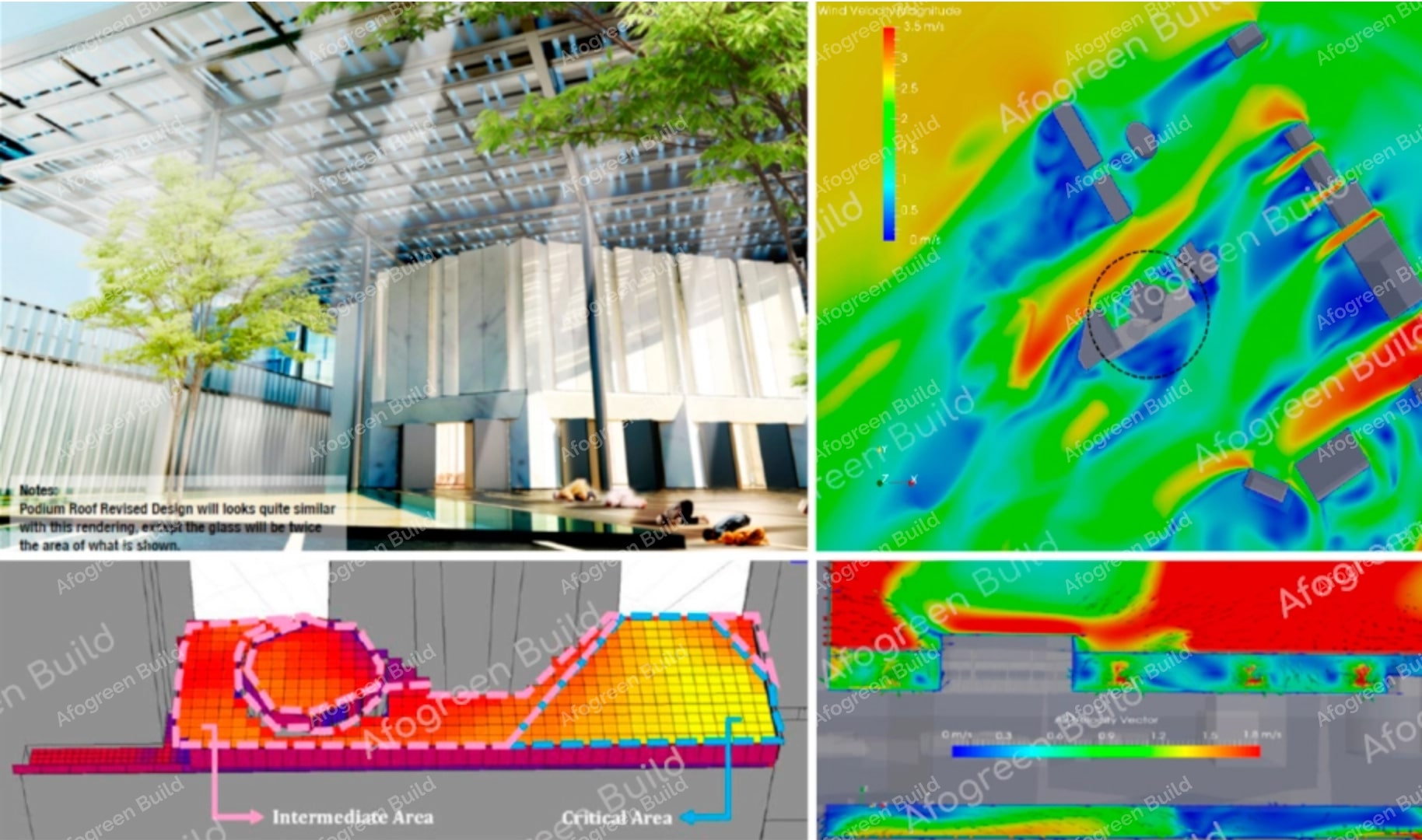
BUILDING SIMULATION
Computer simulation is very useful to estimate the outcome of occupant comfort, microclimate condition, and building energy consumption, far before the building is built. Simulations are very handy to facilitate stakeholders to make informed decision on which options to take, so that the design, material choices, and equipment selections are optimized.

THERMAL MODELLING
Various aspects of occupied spaces affect the thermal comfort perceived by the occupants. Thermal comfort simulation can help estimate occupant perceived comfort based on the space material, air velocity, temperature, etc.
At the micro level, thermal simulation can estimate the amount of heat going through materials, such as window frames and glass. Thermal simulation also can estimate the temperature of the frame and glass. This is important, especially in countries with vast temperature differences between the interior and exterior of the buildings.
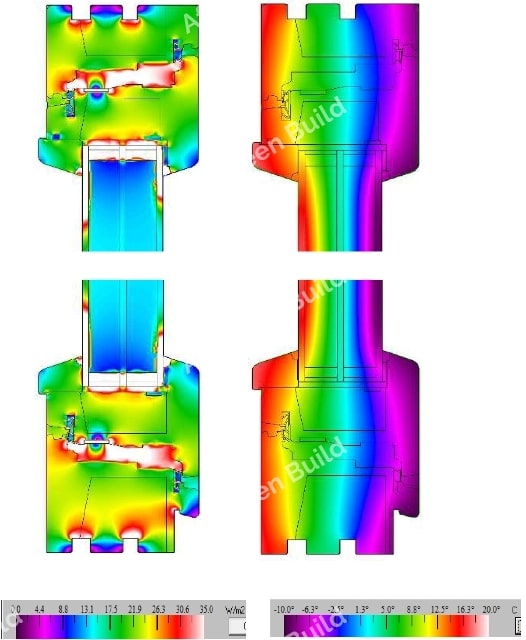
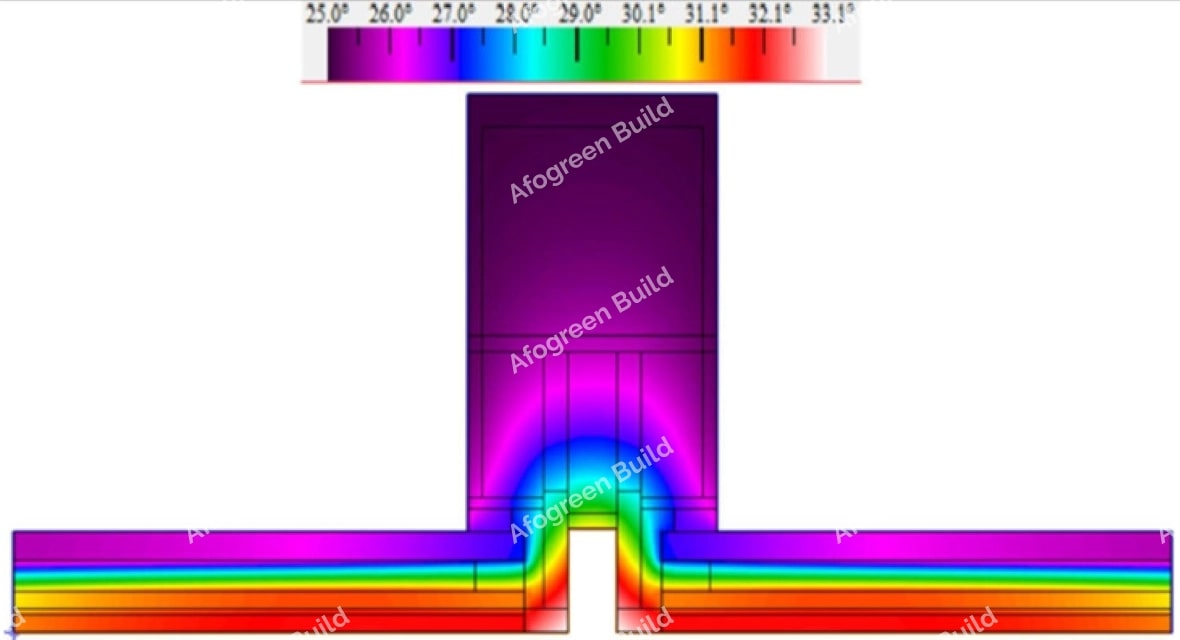
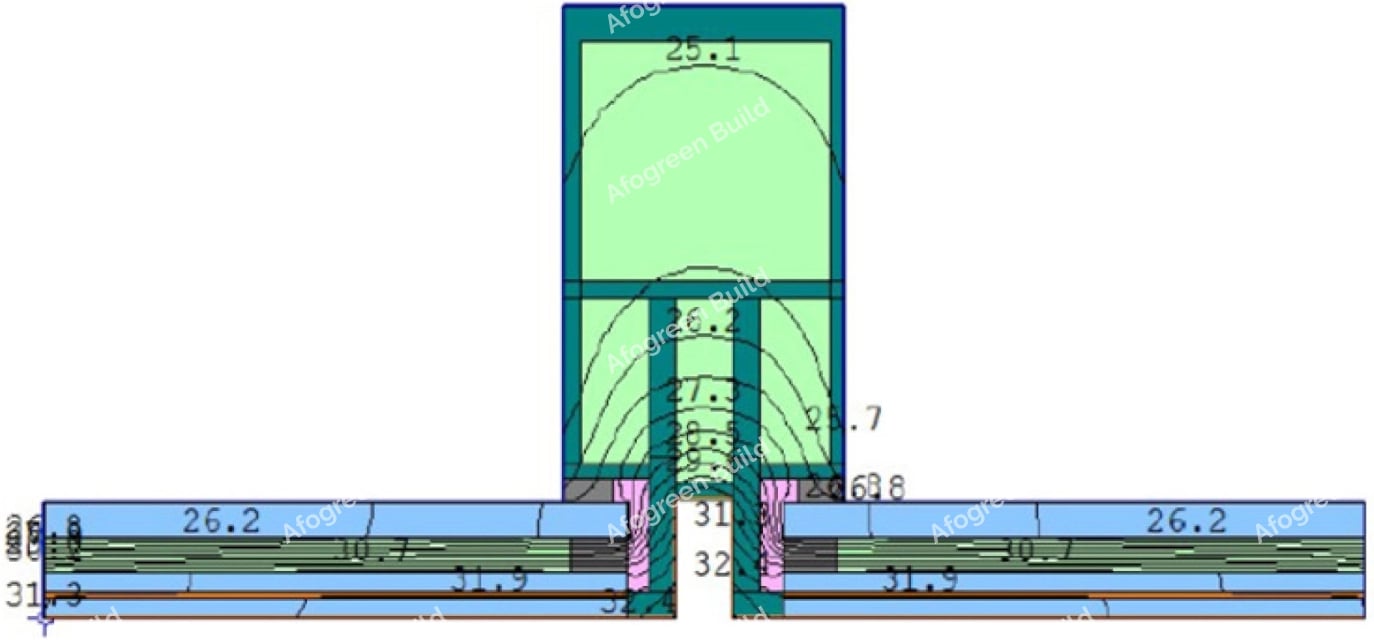
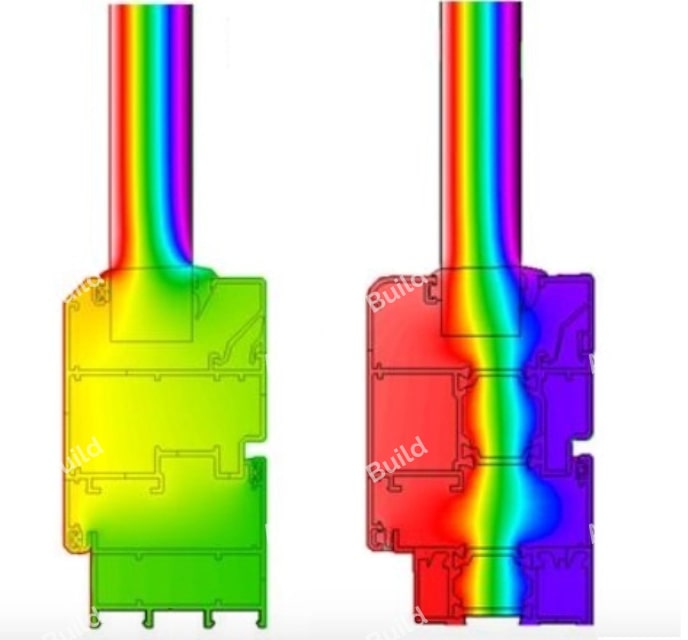
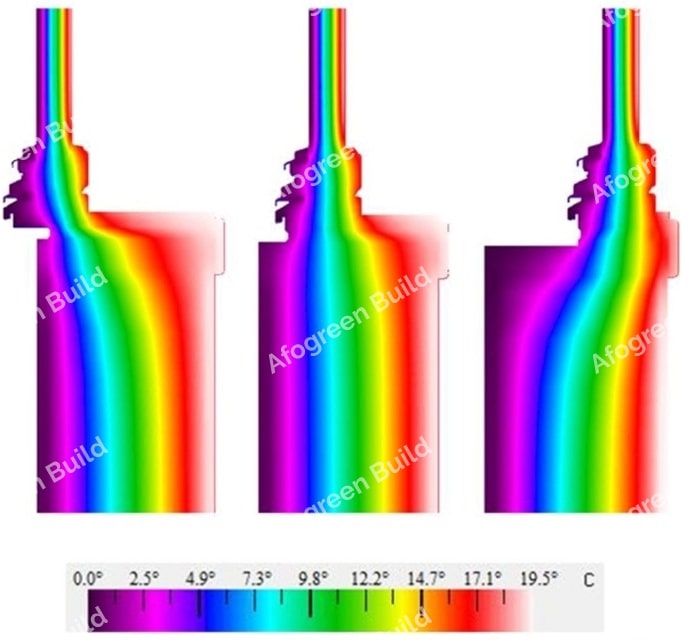
Thermal Modelling Services in Australia
In the effort to advance sustainable building practices, thermal modelling plays a critical role in optimising energy efficiency. By simulating how buildings interact with their environment, thermal modelling helps identify areas for improvement in insulation, ventilation, and heating systems. This not only enhances occupant comfort but also reduces energy consumption.
Afogreen Build specialize in providing comprehensive thermal modelling services tailored to the unique needs of each project.
What is Thermal Modelling?
Thermal modelling is a simulation technique used to estimate occupant perceived comfort based on the space material, air velocity, temperature, etc.
Thermal modelling allows architects, M&E consultants, air conditioning companies, floor heating companies, and builders to estimate the amount of heat going through materials such as window frames and glass and the temperature of the frame and glass. By optimising these elements, thermal modelling helps spaces stay comfortable all year round and achieve energy efficiency.
The Importance of Thermal Modelling in Australia
Australia’s diverse climates present unique challenges for building design and energy efficiency. By simulating how buildings perform under various environmental conditions, thermal modelling enables tailored solutions that enhance comfort and minimize reliance on mechanical systems. It is also essential for meeting the National Construction Code (NCC) Performance Solution, providing data and conducting thermal modelling to demonstrate compliance with energy efficiency standards. Beyond regulatory obligations, thermal modelling offers significant energy cost savings by optimising design elements that reduce heating and cooling demands. Additionally, it supports sustainability goals appealing to environmentally conscious consumers and investors.
How Thermal Modelling Works (Step-by-Step Process)
Thermal modelling involves a systematic process that allows for accurate simulations of a building’s thermal performance.
Step 1: Data Collection
We begin by gathering essential data about the building project, including architectural plans, materials, site location, local climate conditions for accurate simulations, a cooling and heating equipment data sheet, and other necessary information.
Step 2: Simulation Setup
We configure the thermal modelling software by inputting the collected data. This step is crucial before running the simulation.
Step 3: Running Simulations
With all parameters set, we run the simulations to assess how the building will perform under different conditions. We use software approved by standards, which enables us to help projects comply with requirements while aligning with client goals.
Step 4: Analysis of Results
Once the simulations are completed, we analyse the results to evaluate thermal comfort. This step helps identify potential areas for improvement.
Step 5: Reporting and Recommendations
Finally, we compile our findings into a comprehensive report that outlines the results, insights, and recommendations for enhancing thermal comfort.
Integrating Thermal Modelling for Maximum Efficiency
Thermal modelling fosters a vital synergy in the design process, enabling architects, M&E consultants, air conditioning companies, floor heating companies, and builders to collaboratively create buildings that are both energy-efficient and comfortable. By integrating thermal performance analysis early in the design phase, project team can identify and optimize critical elements such as insulation, shading, and ventilation strategies. As a result, buildings are designed to operate efficiently, lowering operational costs while promoting sustainability and occupant satisfaction.
Case Studies and Success Stories (Optional)
Optimising Thermal Comfort in Train Stations Through Advanced Thermal Modelling
We have conducted extensive thermal modelling for train stations, focusing on optimising comfort conditions for occupants at both the platform and concourse levels. By leveraging advanced thermal comfort simulations, we empowered clients with valuable insights to make informed, data-driven design decisions. Our comprehensive approach included a detailed analysis of key comfort factors, such as the space material, air velocity, temperature, etc. Additionally, we assessed thermal comfort using the PMV (Predicted Mean Vote) method, guiding those conditions at the train platform occupant levels met optimal standards. This holistic strategy helps to support an ideal environment for all station users.
Enhancing Factory Climate Control with Thermal Modelling: A Case for Underfloor Cooling & Chilled Beams
We conducted detailed thermal comfort simulations for factory space, focusing on integrating underfloor cooling and chilled beams to optimise occupant comfort. The objective was to assess the impact of various supply air temperature scenarios from the underfloor cooling system, determining which temperature range would achieve the most favourable thermal conditions. Through this simulation, we identified the optimal balance between air supply temperature and comfort levels, guiding energy efficiency and operational effectiveness. This process not only enhanced occupant well-being but also contributed to a more sustainable and cost-effective solution, providing the client with valuable insights for fine-tuning their HVAC system to meet both performance and comfort goals.
Thermal Modelling for Sports Halls: Balancing Cooling and Airflow for Optimal Athlete Performance
We did thermal comfort simulation for sports hall to accommodate 200 athletes dancing simultaneously. The challenge was to balance the cooling capacity required to remove the heat generated by the athletes while maintaining a low air velocity to meet the maximum air velocity standards for badminton. Using a fabric ducting system, we ran multiple scenarios to optimise the configuration, including exhaust grill sizes and air supply temperature, supporting thermal comfort and compliance with sports-specific ventilation requirements. The results provided valuable insights, enabling the design of a highly efficient and comfortable environment tailored to the unique demands of the space.
We have done many projects for thermal modelling with different project characteristics. Contact us to discuss your needs, and we will help you further.
Conclusion & Call to Action
By simulating how buildings interact with their environment, it enables architects, M&E consultants, air conditioning companies, floor heating companies, and builders to make informed design decisions that reduce energy consumption and operational costs while promoting sustainable practices.
If you’re looking to boost your building’s energy efficiency with professional thermal modelling services, connect with Afogreen Build today. Our team is here to provide a consultation tailored to your unique needs and help you achieve your sustainability goals.
Frequently Asked Questions (FAQ)
How much does thermal modelling cost?
The cost of thermal modelling can vary based on the complexity of the project, the size of the building, and the specific requirements involved. At Afogreen Build, we provide customised quotes so that our services meet your unique needs while offering competitive pricing. For further info please contact us.
How long does the thermal modelling process take?
The duration of the thermal modelling process depends on factors such as the project’s scale and the amount of data to be analysed. Typically, the entire process, from data collection to final reporting, can take several weeks. We aim to provide timely results without compromising on quality.
What types of projects can benefit from thermal modelling?
Thermal modelling can be applied to a wide range of projects, including residential, commercial buildings, and industrial facilities. Any project that aims to optimise energy efficiency and occupant comfort can benefit from this service.
Can thermal modelling help reduce energy costs?
Yes. By optimising building design and systems through thermal modelling, projects can significantly reduce heating and cooling demands, leading to lower energy bills and enhanced sustainability.
What factors are considered in thermal modelling?
Thermal modelling takes into account various factors such as location, adjacent shading and light-reflecting structures, building fabric, glazing, climate, number of occupants inside at any time, and activity level of occupants inside the building.
How can thermal modelling influence design decisions?
Thermal modelling offers data-driven insights that can influence key design decisions, such as the choice of materials, orientation, and HVAC system specifications. By visualising potential outcomes, stakeholders can make informed choices that align with both performance goals and aesthetic considerations.
Can thermal modelling assist in achieving net-zero energy buildings?
Yes, thermal modelling is essential for designing net-zero energy buildings. It allows designers to analyse energy usage patterns and optimise energy production strategies, helping that the building generates as much energy as it consumes, often through renewable sources.
